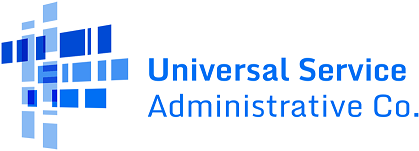Before You Begin
Before you begin the process of applying for Schools and Libraries (E-rate) program discounts for the upcoming funding year, you should review the description of the E-rate program and the application process flow chart. These documents provide an overview of the program and the sequence of activities you must complete to receive funding. You can also look up frequently used program terms
Services Eligible for E-rate Funding
Internet access and many commercially available telecommunications services are eligible for discounts, as well as equipment that allows access to these services. The Eligible Services Overview gives you a general understanding of eligible products and services. You should also review the Eligible Services List (ESL) for the appropriate funding year because the entries in this list, and their eligibility, can change from one funding year to another. A funding year begins on July 1 and ends on June 30 of the following year. For example, Funding Year (FY) 2018 begins July 1, 2018, and ends June 30, 2019.
Eligible Facilities
To be eligible for discounts from the E-rate program, you must meet the program definition of a school or a library. If you are not sure of your eligibility status, you may need to contact your higher-level administrative agency (state department of education, state library, or other organization) to assist you.
Discounts range from 20 to 90 percent of the cost of eligible services. You can refer to the program’s discount matrix for basic information on discount percentages and review information on calculating your discount to find out what your discount would be.
Note: Schools and libraries can apply on their own or they can form consortia to aggregate demand and thereby negotiate lower prices. The entity leading the consortium may or may not be eligible for discounts.
It is also possible that certain school or library students and/or facilities may also be eligible for discounts:
- Non-instructional facility (NIF) – this category includes school buildings that generally don’t contain classrooms (e.g., school administrative buildings, school bus barns, school stadiums) or library buildings that don’t have areas open to the public (e.g., library administrative buildings, library technology centers, bookmobile garages)
- Non-traditional elementary and secondary education – this category includes Head Start, pre-kindergarten, juvenile justice, adult education, etc.
- Educational Service Agencies (ESA) – also called ESUs, BOCES, or other names, these are regional public service agencies that develop, manage, and provide services or programs to local education agencies
- School Residential Facilities – starting in FY2011, the following school residential facilities became eligible for discounts:
- Schools on Tribal lands;
- Schools that serve children with physical, cognitive, and behavioral disabilities;
- Schools that serve children with medical needs;
- Juvenile justice schools, where eligible; and
- Schools with 35 percent or more students eligible for the National School Lunch Program (NSLP).
E-rate Productivity Center (EPC)
Your school district or library system must have an account in EPC to file program forms, receive notifications, and conduct other program activities. Independent schools and libraries, consortia and statewide applicants also have accounts. You must have an account administrator who manages your account, grants rights to other users, and provides or updates information on the schools in your school district or libraries in your library system. The account administrator must be an employee of the school or library organization. If you do not have an account in EPC or need assistance, call our Client Service Bureau (CSB) at (888) 203-8100.
Obtaining an Entity Number
If you do not have an entity number (also called a billed entity number or BEN), you will need to obtain one. In general, each school and school NIF in a school district and each library outlet/branch and library NIF in a library system must have its own entity number if it will receive discounted services. Call CSB at the number above if you need assistance with entity numbers.
Entity numbers can be assigned by calling the Client Service Bureau (CSB) at (888) 203-8100.
Next Step: Competitive Bidding
Once you have reviewed the information above and obtained an entity number, you can go to Step 1: Competitive Bidding, to learn how to begin the competitive bidding process.
